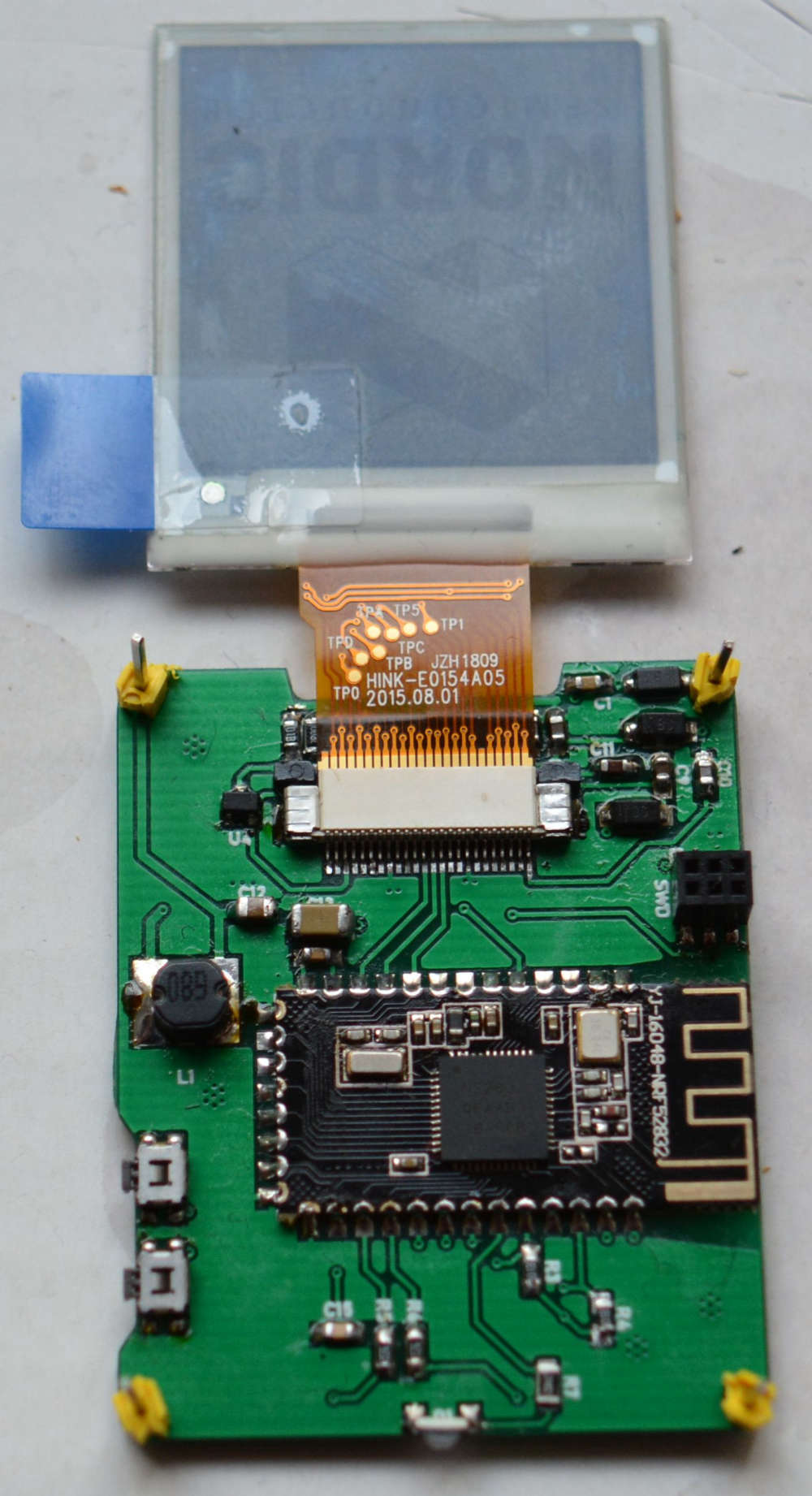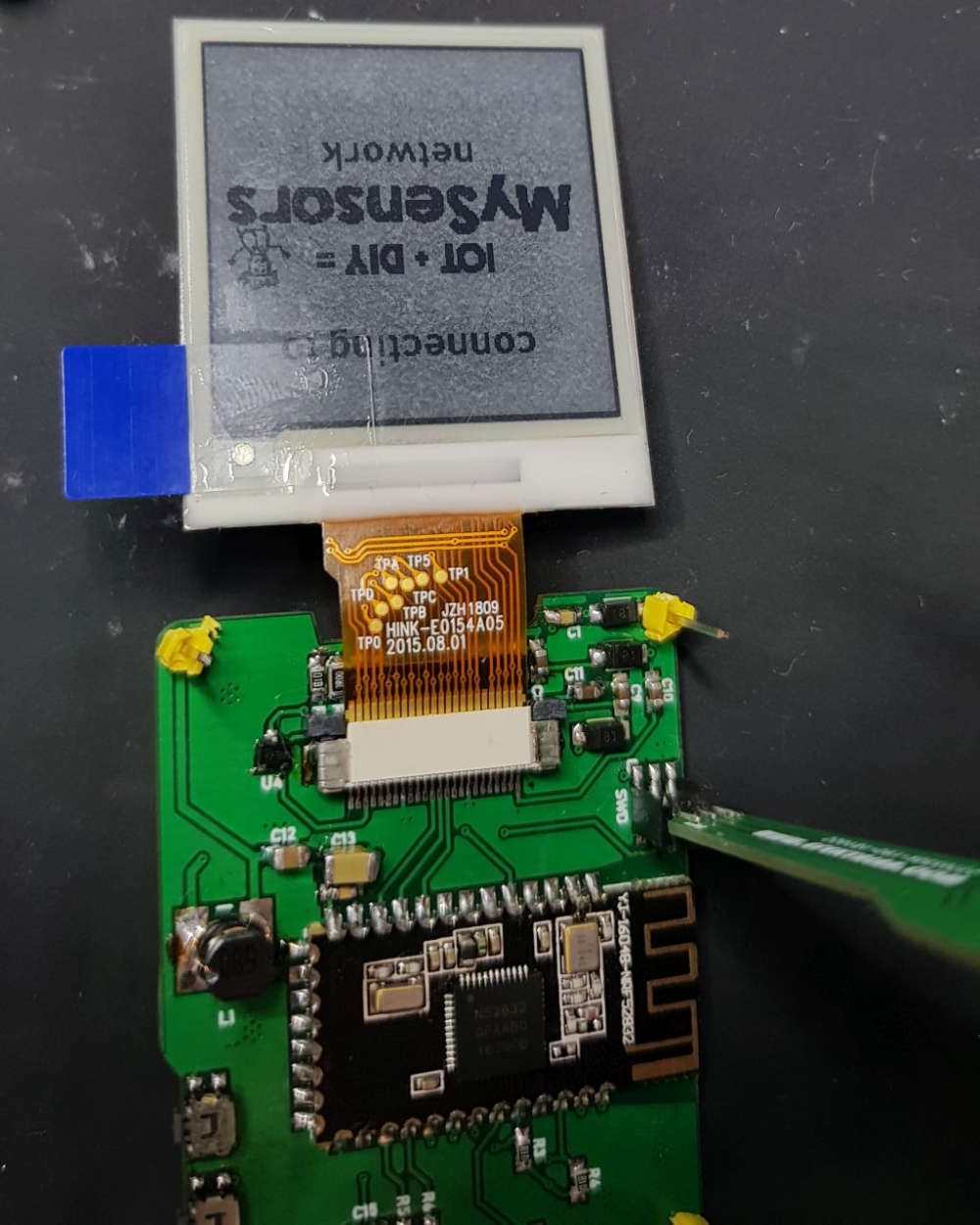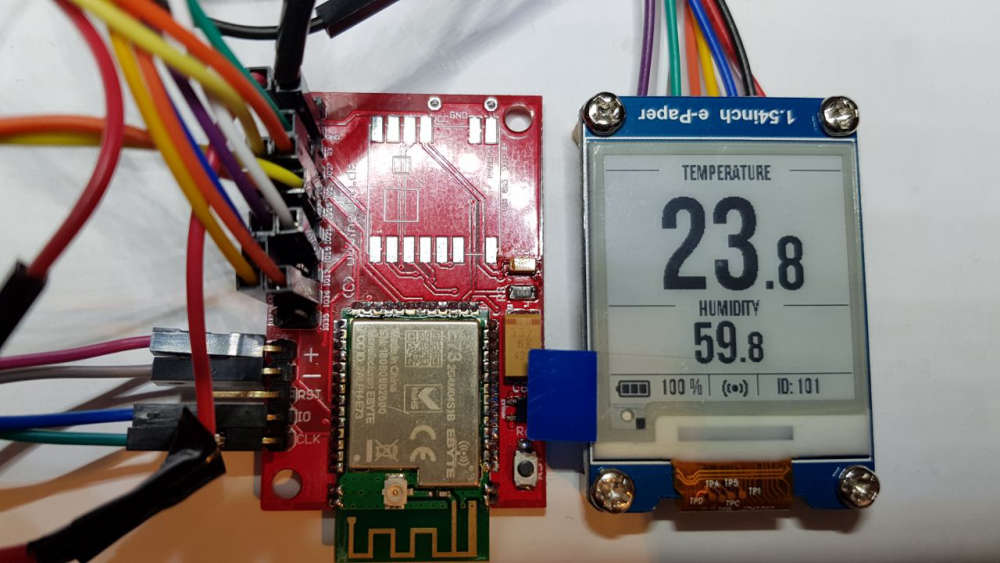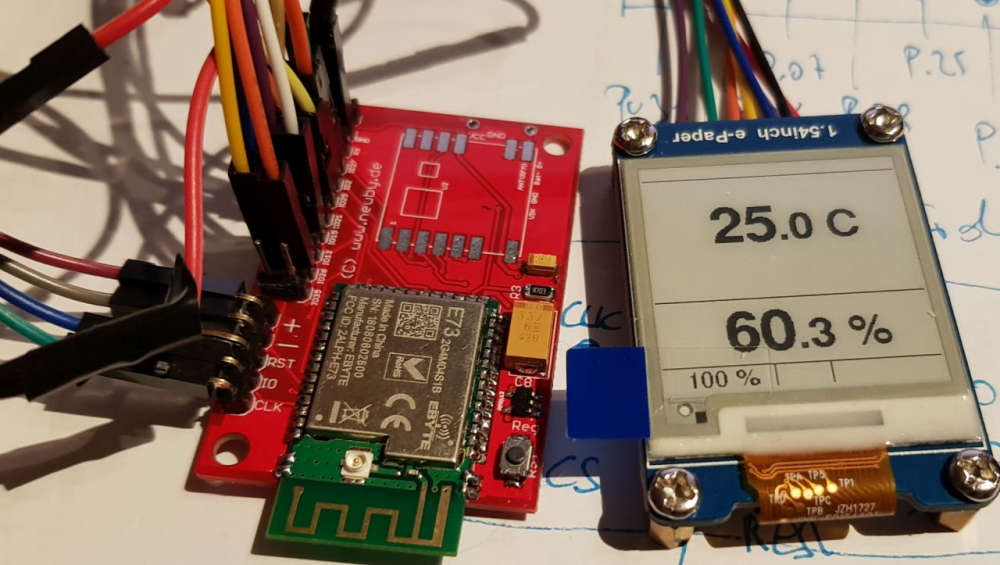@monte thanks for your hints. I have actually no peripherals attached during my test. The only external peripheral is a Sensirion sensor (not attched during the power save test) has an auto switch off, but no explicit and it gets down to nano amps.(at least far less than 1uA).
I did a lot of research in the Nordic DevZone but was not successfull. It looks like that the mySensors sleep functions for the nRF52 family does not work as I have expected (I'm using the MyBoardNRF5.h/cpp which includes some kind of Nordic power save features). It might have something doto with the UART switchoff which might not works or ...
I'll also try other nRF52840 moduls to ensure it is not because of one product. I'm using a bare nRF52840 from RFstar which has no LED or any other consumer on it.
https://www.aliexpress.com/item/32921970101.html?spm=a2g0o.productlist.0.0.33f77b08ivGnJC&algo_pvid=834cd241-fead-40dd-a423-762eeaad1e6b&algo_expid=834cd241-fead-40dd-a423-762eeaad1e6b-29&btsid=7de062ad-ecfb-4619-bea6-f9bc99c99996&ws_ab_test=searchweb0_0,searchweb201602_8,searchweb201603_52
heinzv
Posts
-
Everything nRF52840 -
Everything nRF52840anybody seen this new Nordic IoT MCU:
https://www.nordicsemi.com/Products/Low-power-short-range-wireless/nRF5340So far only a DK board for 49$ is available. Has BLE 5.1 (incl. long range).
I guess it will take some time till it is supported by Arduiono, Platformio etc.I'm still striggling with the nRF52840 and the low power sleep. So far I'm far away from the 1.5 to 5uA in sleep mode. Maybe someone has a good example for a sleep, internal timer wake-up.
The mysensors project I'm using has 1,5mA in sleep and 15mA during sensor read and send. That is not usable for battery mode. -
Everything nRF52840@amine-alami what nice schematic diagram are you refering to? I'm looking at this thread very sporadically.
-
stm32 sleep support@rozpruwacz I have also my "own" nrf52840 mySensors board (50m33mm) which we designed together with ranseyer (made for a few cents). The small nRF5280 modules from RFstar which are on our relatively small mySensors board (which the mySensors 2.6 standard pinheader) cost around 5€. So I consider them as very cost effective.
One of the very interesting MCU's a few of us have tried is the TI CC1352(P) which has 2,4GHz and 868MHz on-board, so you can use one of theme or both together, but there are only a few modules available and they cost almost 30€ and you need to place them on your own board such as the nRF52840 or any other modules which are meant to solder on own designed boards. -
stm32 sleep support@rozpruwacz that is clear that you might use other radio's, this is just an added value to use it as it's on-chip and mysensors supports it already. you can just go ahead and combine it with lora/rfm95 (what I also do) and rs485.
But the main question is: Have you found cheap maker boards with such mcu's like STM32L4S5 or STM32L4R5? I have not found anything so far. But I got nrf52840 boards for 5$ and bought 20 pieces at alibaba. AN 1MB flash and 256kB Ram is suffcient for many apps even with tft or epaper display. And you have already Arduino, Platform.io, mysensor, Segger IAR etc. support.
But I dod agree that it would be nice to have a full STM32L4x5 support incl. sleep once maker boards are avaiable. Blue and Blackpill are at least not competitors to nRF52. -
stm32 sleep support@rozpruwacz why not using one of the nrf52 boards? I was also using stm32 board (bluepill, blackpill, etc.) but at the end, the nrf52 has many advantages over stm32 chips. it is also a 32bit arm mcu, extrem low-power, a lot more ram/flash, a radio on board and it has arduino, platformio and mysensors support. and cheap boards are available.
I'm using nrf52 with e-paper display (utra-low power) and the stm32 ram is not really sufficient. So I don't see any advantage to use stm32 boards over nrf52. -
💬 EFEKTA Temp&Hum sensor(ver. nRF52 )+E-Ink display@berkseo took a bit longer and I have now taken a picture with my Nikon Cam, not sure if it helps, I might add another one if required.
But you see the inductor has 68uH.
-
💬 EFEKTA Temp&Hum sensor(ver. nRF52 )+E-Ink display@berkseo no I have not solved the problem yet. I 'll take another picture with higher resolution tomorrow and post it here.
The inductance has the value which is specifiied (I think 68uH). I have all ordered by the links provided.
I have checked the soldering and resolved a few times. I think all pins shall be soldered, but I can verify it again. That was also my first thought and checked the ribbon cable over and over again. -
💬 EFEKTA Temp&Hum sensor(ver. nRF52 )+E-Ink display@berkseo I have continued to work on the new PCB's und have oredered some 603 resistors und condensors. I have checked all of the parts and the soldering but did not get the one PCB to displays something. The program runs und I see the LED flashing and also the log looks normal.
A build a second PCB and this one shows the intro graphics but with a grey background and then it stops showing something. No idea what goes wrong.

-
💬 EFEKTA Temp&Hum sensor(ver. nRF52 )+E-Ink display@berkseo Happy new year! I was waiting for an answer from you, so I have not done any further investigation before I have more infos ;-)
I have now ordered another batch of 2450 battery holders (I have obviously clicket in the second link in your parts list which was the 2477).So based on your info, my C13 is definitly wrong, I have used a 0.1uF and need to change it to a 100uf (what are you using as you write 47uF to 200uF ?). I think I need to order them first. For C12 I used a 10uF so that fits.
I think I could also have some problems with the 0.1uF parts as I have only the larger 1206 which I have to replace with 805 or 603 sized. I have ordered them already but you know that takes another 4-6weeks. So I'll wait till all parts are there and continue then with your infos and the correct ordered parts.
I have also problems with my new script as my power consumption was first 0.8mA (800uA) and now it's even 3.1mA during sleep (on my other PCB's), but was following your sleep procedure (putting all internal and external devices to powerdown). I was expecting somewhat between 2 and 20uA, so I have to analyze what is wrong.
So you solder your PCB in 0.5hour? Then I might order the PCB's bette rfrom you :-) It takes me at least 2+ hours (the first was 3hrs).
I have a super small soldering iron and I also have a hot air SMD soldering station and quality solder paste. May I try it again with solder paste.more then later.
thanks and bye till later
Heinz -
ESP32 based IoT gateway/control hub with TFT, touch, RFM69 and more..@martin-harizanov said in ESP32 based IoT gateway/control hub with TFT, touch, RFM69 and more..:
RFM69HW
oh, that is bad luck. I had one RFM69 in mind (I think the HCW) which is pin compatible with the RFM95. Ranseyer made one PCB which can take a RFM69 or RFM95 at the same place (just in case somebody still want to use the RFM69).
Then I can't order it. However, a great project. -
ESP32 based IoT gateway/control hub with TFT, touch, RFM69 and more..@Martin-Harizanov Great job Martin! I like and use the ESP32 since it was introduced.
If I would order the TFT32 without the RFM69HW (39€) and would replace it with my RFM95 (LoRa) modules.
The RFM69HW (only the HW version) and the RFM95 have the same pinouts right? Can you confirm that? I only use RFM95, no RFM69. -
💬 EFEKTA Temp&Hum sensor(ver. nRF52 )+E-Ink display@berkseo I've got your Temp/Hum sensor today and the PCB's (3+3). Since I have ordered the cr2477 batteries and your batterholder takes only the cr2450, I've tried it with the program adapter and USB power. It works. Thanks. I have ordered now additional cr2450 batteries.
I took the batteryholder form your list and they are for the cr2477!Then I soldered my own first two PCB's, the battery PCB and the Sensor PCB. It took me quite a while (3 hours at least). It's nothing for beginners (but I not a beginner :-) )
However during my testing, I found my battery PCB working and the sensor node runs the MYSensors part and the LED blinks but the E-Paper does not work and also the SHT20 returns 998 for temp and hum.I have not found the C12 capacitor in your parts decription list, but only a C14 (which is not printed on the PCB) with 10uF. So I assumed the C12 = 10uF. I have seached the page and there is no C12.
One the other hand, I have not found C14 on the new PCB. Maybe it's below C13 and no part print on PCB? The C13 is larger then the pads below, so it's confusing.
Maybe you can update/correct it on openhwardware, so that I can solder it correct.So looking for the problems with e-paper and SHT20: A schematic diagram would really really help me, otherwise I'm lost. Please provide it (or at least via a PM?).
Would it be possible to get it? If you have e.g. an Eagle project (schematics and board).It was really essential, that you provided the programm adapter for the tiny SWD connector. Thanks for that!
here are my soldered PCB's:

-
Everything nRF52840@NeverDie You doing a great research! I have quickly checked your REPL code and the radio lib.
So you have implemented a OSI Layer 3+4 (Transport Layer with IP/TCP Stack).
I'm wondering if/how this can be used to complay to BLE 5.0 (long range), ZigBee and Threads which the new Nordic SDK (Zigbee and Threads 2.0) offers? Are they also using the Softdevice S140 (6.1) libs or ...?
There is a ZigBee OTA update example provided by Nordic (but I have not yet enogh time to test it).
Currently, I'm still using MySensors and the NRF5_ESP (Nordic private) protocol which works. IT would be also interesting to use a more industry standard protocol like ZigBee or THREADS which seem to be also supported by OpenHAB.
I'll certainly do further investigations in this direction. I have tried to test it with Segger Embedded studio and also with IAR Studio for ARM (the second requires some newer 32Bit version libs from Nordic and an internat request for that was raised already). Segger works fine with the J-Link adapters. -
💬 EFEKTA Temp&Hum sensor(ver. nRF52 )+E-Ink display@berkseo looks very good, very professional work. I'll solder a few devices once I get the new PCB's and will also work further on my version of the firmware. It works already quite nice (transfering float values and showing decimals).
Attached the picture of a working pair of a sensor node (using my PCB's) and a SHT31 and a nRF52 serial gateway.
-
Everything nRF52840@neverdie interesting research and ideas. Have you tried to get BLE 5.0 running (the S140 SD) or using the nrf52840 radio features (best with long range) so that we can consider a sensor node/actor and does the sleep properly work? There are some basic features which have to work before switching the development/runtime env.
-
💬 EFEKTA Temp&Hum sensor(ver. nRF52 )+E-Ink display@berkseo good to hear. And you also mentioned to send some new PCB'
s? Let me know if I had to pay something additional. -
💬 EFEKTA Temp&Hum sensor(ver. nRF52 )+E-Ink display@berkseo glad to hear, that it worked.
I'm meanwhile working on the sketch for the Tem & Hum sensor node. As written, I've switched to the GxEPD e-Paper library. It is easier to use and is installable via the Arduino Studio or via platform.io.
I've evaluated a lot of fonts and have finally found one I like and which fits to the display even with the decimals. I used the fontconvert from the GxEPD lib which can convert any TTF or OTF font.
Here is a picture (I'm still using the MySesnors PCB from ranseyer waiting for the new PCB's from you)

-
💬 EFEKTA Temp&Hum sensor(ver. nRF52 )+E-Ink display@berkseo Thanks, very good modifications. I'll wait patiently :-) I'll then not use the 5 + 5 PC's and eait for the new ones.
Do I understand you right, that I'll receive another 5 + 5 updated PCB's without additional money charged? That would be great (if required I can send you additional €'s or US$).
Thanks for the font-hints. I'll test it once I'm back from my BIZ-trip. -
💬 EFEKTA Temp&Hum sensor(ver. nRF52 )+E-Ink display@berkseo I have updated my post above with an additiona picture.
You can do all on Windows (I mostly use Windows 10 x64). I sometimes use Linux like for creating the BMP clones. I'm using the latest Mint version in a VMware VM.
Let me know if you need more infos ...BTW: I was further working on the own created nRF52832 PCB's with ePaper (I have many E73 modules left) and will start soldering the PCB's I have ordered from you if all parts are there (most of thema are).
The one ordered soldered module is still in transit (or I did not get it so far).Below another picture of the ePaper output. I have tested the idea with two fonts: The larger one for the non decimals and a smaller one for the decimal. I'm using the GxEPD standard e-Paper library in my latested sketch, as it's easier to use, has more fonts und is ready for more ePaper modules/sizes.
It is just an intermediate state (batter symbol, larger font missing etc.).
